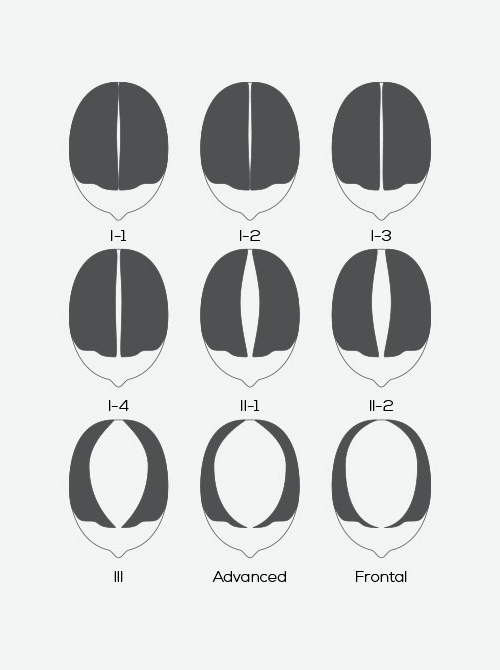How hair loss occurs
How hair grows | Male pattern baldness | Female pattern hair loss
Female hair loss
Female pattern balding, also known as hormonal hair loss or androgenic alopecia, is surprisingly common, affecting 30% of the female population at some stage in their lives.
Whilst male pattern baldness is usually concentrated at the hairline, temples and crown, in women, hair loss tends to be spread more diffusely throughout the central scalp, behind a preserved hairline.
Hair loss in women can be related to a whole range of factors including genetic predisposition, abnormal hormone levels, underlying medical conditions, stress and even diet. Therefore, a thorough evaluation is particularly important in order to identify and treat any associated medical conditions. This alone may reverse the hair loss, but if not, the action of stabilising the loss may allow us to consider hair transplant surgery in appropriate patients with sufficient donor hair supplies.
Our highly refined follicular unit transplantation techniques can enable us to transplant within existing thin hair to achieve a significant change in appropriate candidates.
Unfortunately, many women with diffuse thinning, such a female pattern hair loss, are not suitable candidates for hair transplant surgery because they risk continued thinning after surgery, or even an acceleration of hair loss caused by the surgery itself.
At The Maitland Clinic we provide a full range of treatments, including medication, Platelet Rich Plasma (PRP) and surgical procedures, for hair loss in women.

The Savin Scale
The Savin scale of hair loss was developed in 1996 by Dr Savin from Yale University. It provides a visual gradient of hair loss pattern and density for women with pattern baldness.
Image I-1 shows the central parting of a woman with no hair loss. In images I-2 to 1-4 the width of the parting gets progressively wider.
Images II-1 and II-2 demonstrate diffuse thinning over the top of the scalp.
Image III shows extensive diffuse hair loss on the top of the scalp, with some remaining hair, whilst the “advanced” image demonstrates extensive loss with no surviving hair in this region.
The frontal image demonstrates hair loss at the front and centre rather than just in the midscalp.

Types of Female Hairloss
Contact us
* Required fields










